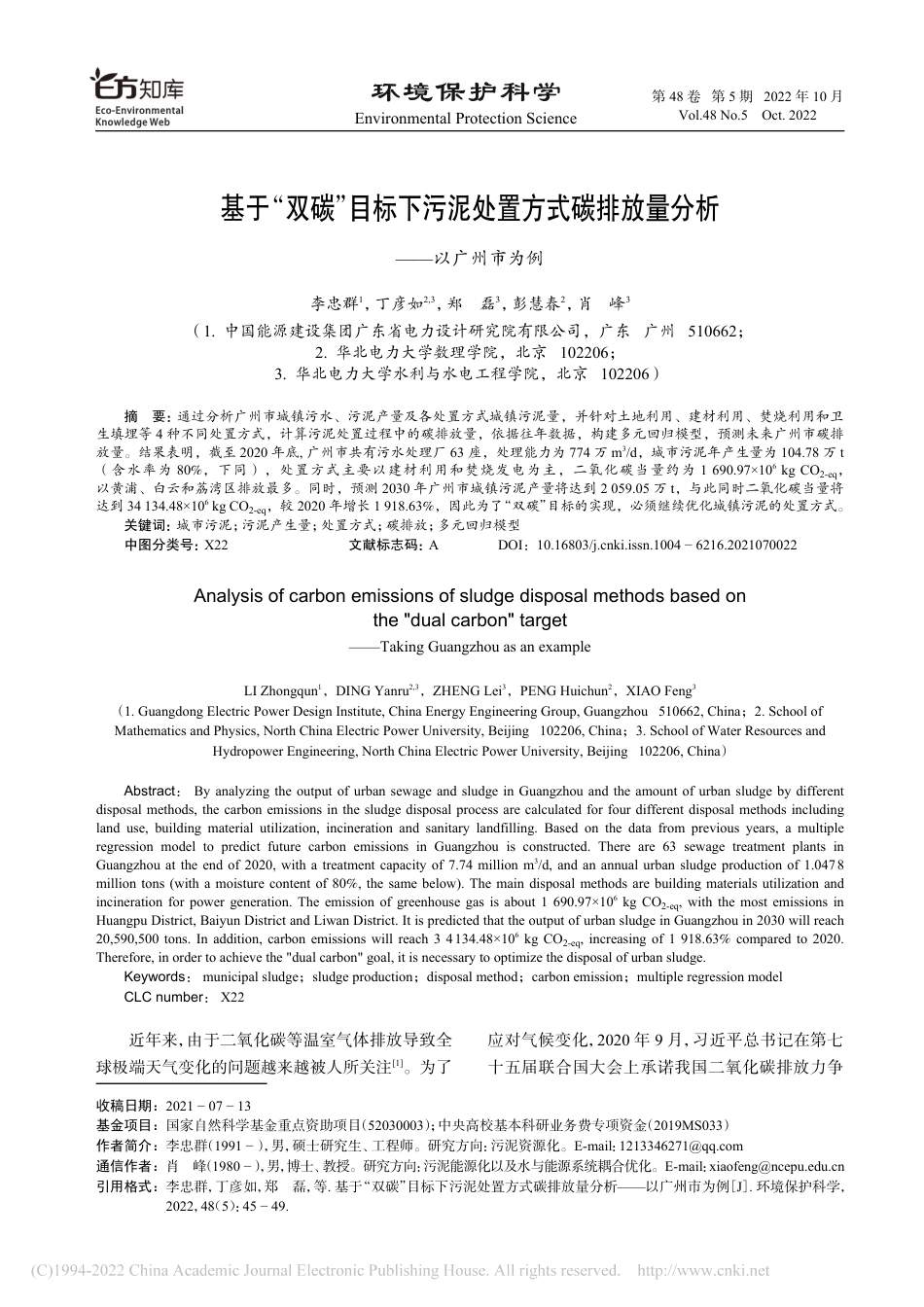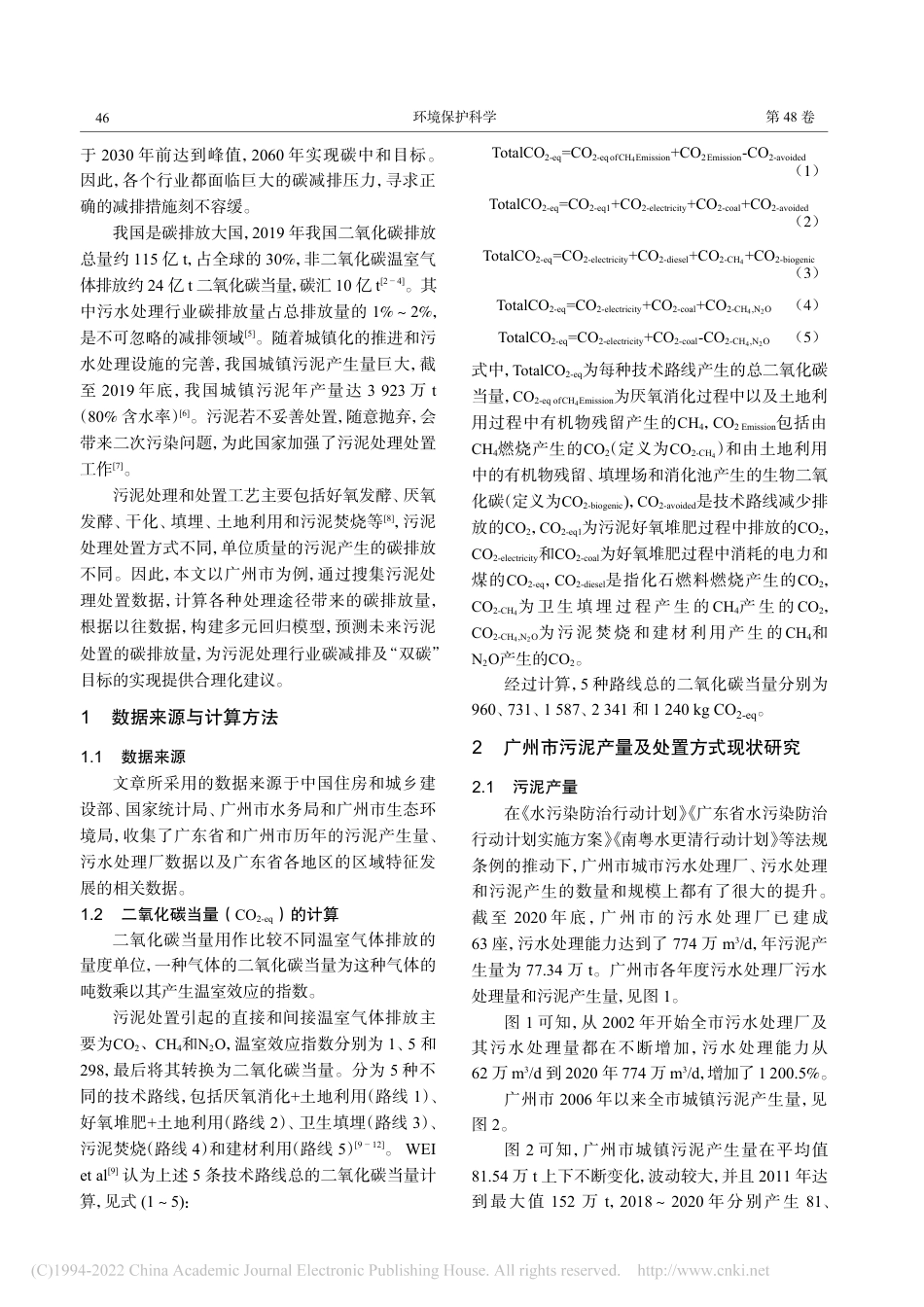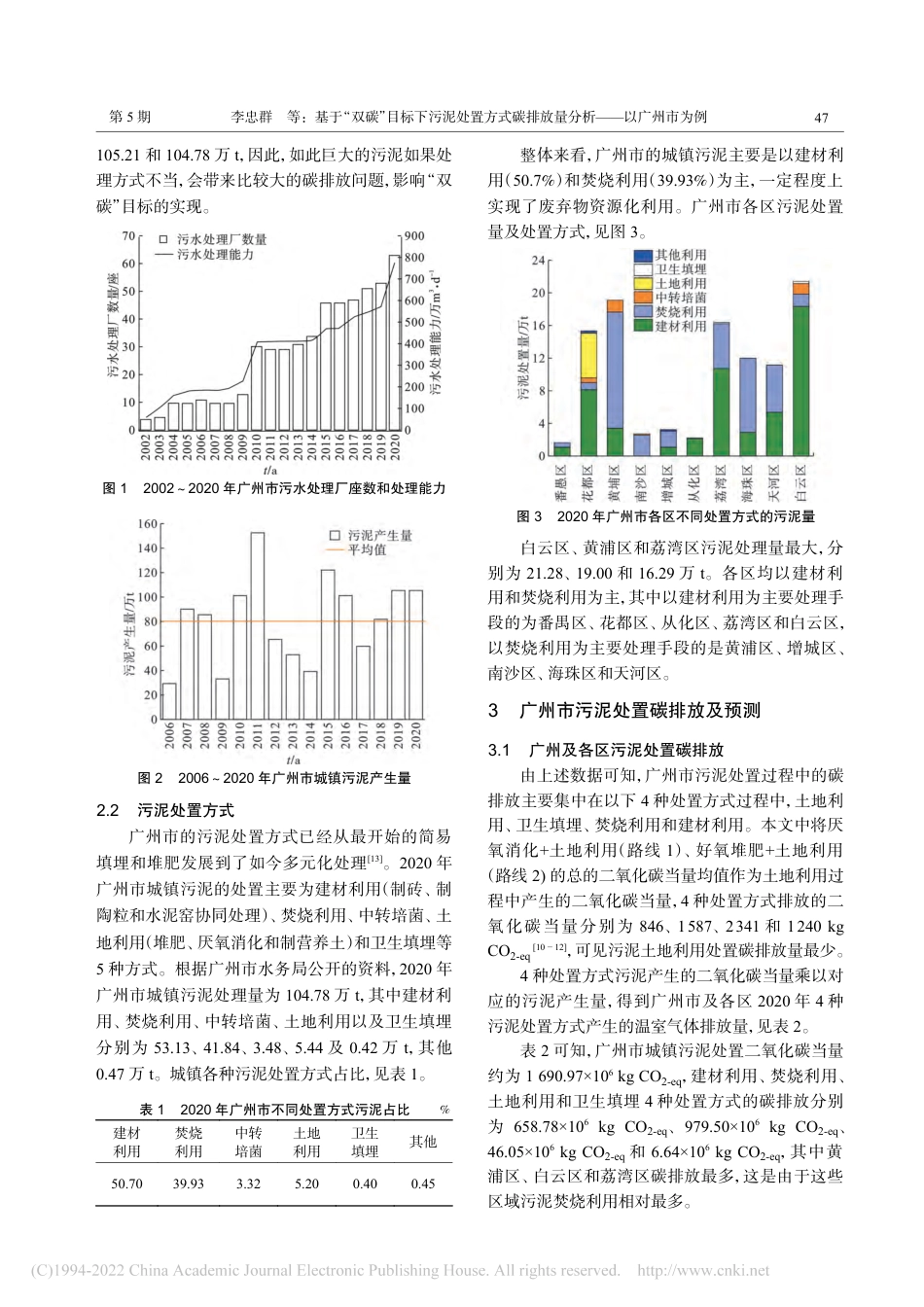基于“双碳”目标下污泥处置方式碳排放量分析——以广州市为例李忠群1,丁彦如2,3,郑 磊3,彭慧春2,肖 峰3(1. 中国能源建设集团广东省电力设计研究院有限公司,广东 广州 510662;2. 华北电力大学数理学院,北京 102206;3. 华北电力大学水利与水电工程学院,北京 102206)摘 要: 通过分析广州市城镇污水、污泥产量及各处置方式城镇污泥量,并针对土地利用、建材利用、焚烧利用和卫生填埋等 4 种不同处置方式,计算污泥处置过程中的碳排放量,依据往年数据,构建多元回归模型,预测未来广州市碳排放量。结果表明,截至 2020 年底, 广州市共有污水处理厂 63 座,处理能力为 774 万 m3/d,城市污泥年产生量为 104.78 万 t(含水率为 80%,下同),处置方式主要以建材利用和焚烧发电为主,二氧化碳当量约为 1 690.97×106 kg CO2-eq,以黄浦、白云和荔湾区排放最多。同时,预测 2030 年广州市城镇污泥产量将达到 2 059.05 万 t,与此同时二氧化碳当量将达到 34 134.48×106 kg CO2-eq,较 2020 年增长 1 918.63%,因此为了“双碳”目标的实现,必须继续优化城镇污泥的处置方式。关键词: 城市污泥;污泥产生量;处置方式;碳排放;多元回归模型中图分类号: X22文献标志码: ADOI:10.16803/j.cnki.issn.1004 − 6216.2021070022Analysis of carbon emissions of sludge disposal methods based onthe "dual carbon" target——Taking Guangzhou as an exampleLI Zhongqun1,DING Yanru2,3,ZHENG Lei3,PENG Huichun2,XIAO Feng3(1. Guangdong Electric Power Design Institute, China Energy Engineering Group, Guangzhou 510662, China;2. School ofMathematics and Physics, North China Electric Power University, Beijing 102206, China;3. School of Water Resources andHydropower Engineering, North China Electric Power University, Beijing 102206, China)Abstract: By analyzing the output of urban sewage and sludge in Guangzhou and the amount of urban sludge by differentdisposal methods, the carbon emissions in the sludge disposal process are calculated for four different disposal methods includingland use, building material utilization, ...



